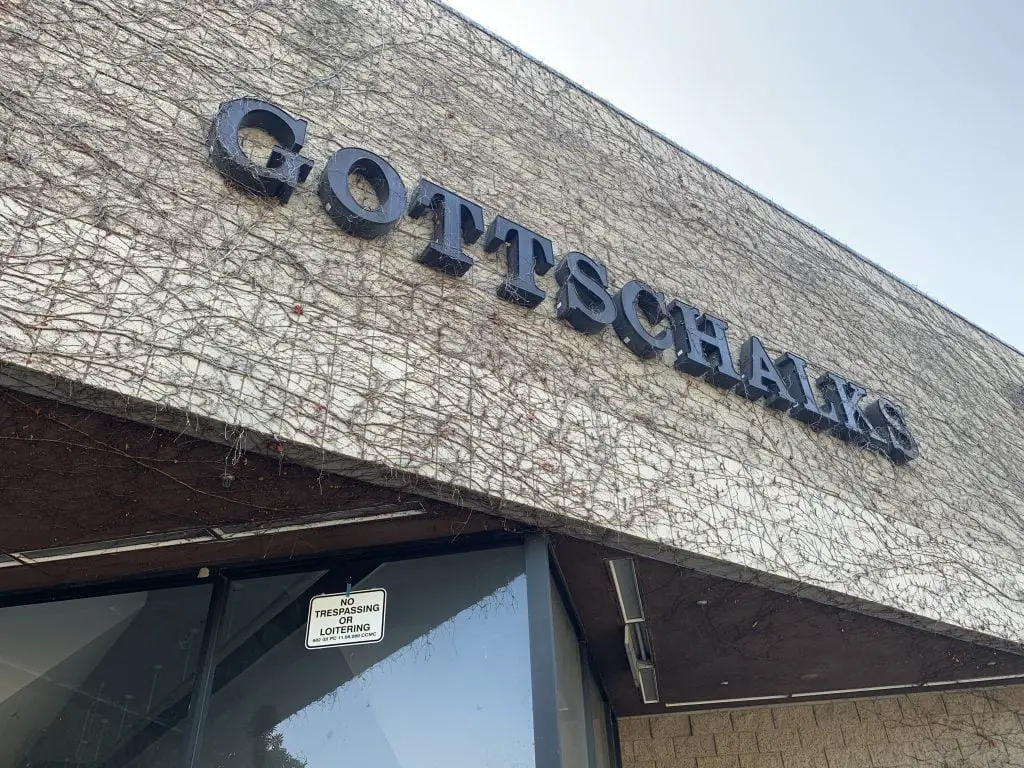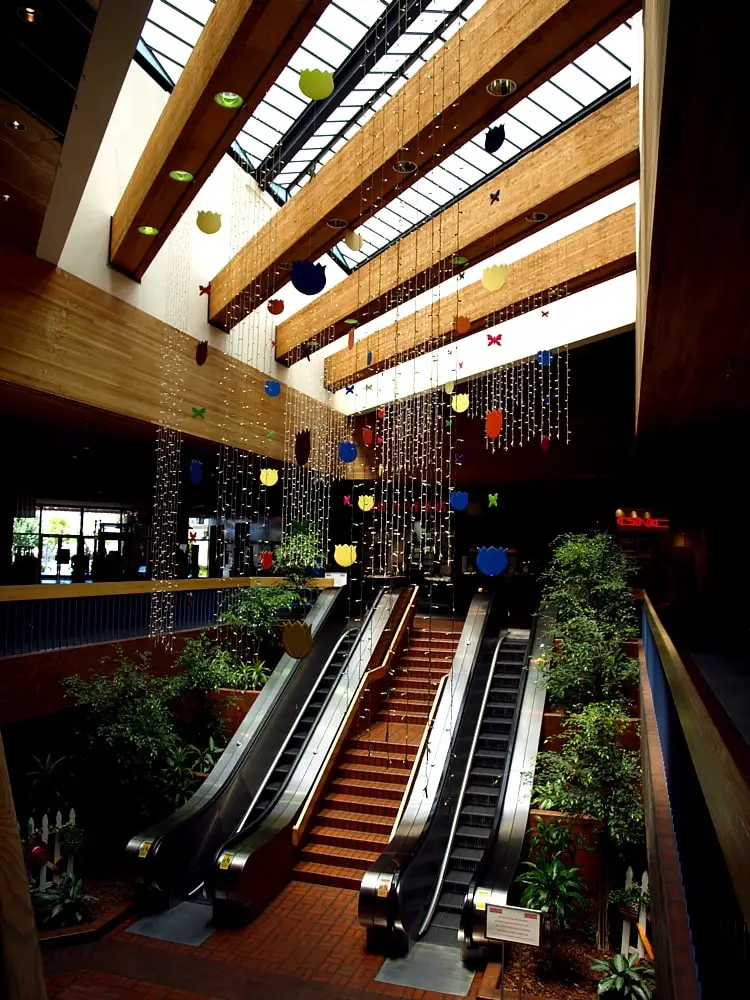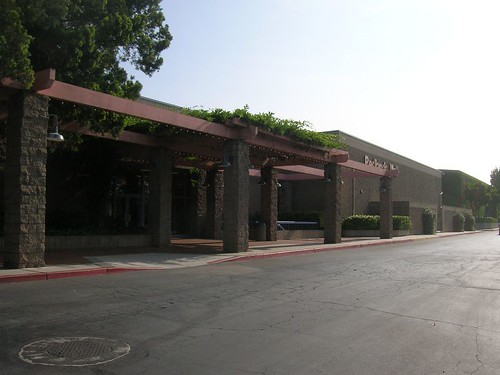The Dawn of Redlands Mall
In 1977, Redlands, California, witnessed the birth of Redlands Mall, a commercial venture to rejuvenate the city’s retail landscape. The Hahn Company, a notable name in real estate development, spearheaded this ambitious project.
They envisioned a shopping hub that would attract locals and draw visitors from neighboring areas, enhancing Redlands’ appeal as a destination for things to do near San Bernardino, California.
The construction of Redlands Mall led to the demolition of several older buildings, including the La Posada Hotel, paving the way for a modern retail space. This move was part of a larger strategy to inject new life into the city’s economy and create a vibrant community center.
The mall sprawled across approximately 12 acres, strategically located between Orange Street and Eureka Street, a choice spot that promised high foot traffic and visibility.
Upon its grand opening, Redlands Mall boasted over 173,000 sq ft of enclosed leasable area, complemented by a 12,500 sq ft freestanding retail building.
It featured two levels of shopping paradise, initially housing anchor stores such as Sav-on Drugs and Harris’, a well-known department store.
Despite its modern design, the mall’s all-cinder block construction received mixed reviews, as it contrasted sharply with the architectural heritage it replaced.
Yet, it marked a significant milestone in Redlands’ commercial history, setting the stage for decades of retail activity.
Key Tenants and Changes Over Time
Redlands Mall started with high hopes and notable tenants. Sav-on Drugs anchored one end, a familiar name to local shoppers, later transitioning to CVS Pharmacy, a national chain.
Harris’, another anchor, provided a wide range of apparel and home goods. However, the retail landscape began to shift dramatically in the late 1990s.
In 1998, a significant change occurred when Harris’ closed its doors. This event marked the beginning of a new era as Gottschalks took over the space following its acquisition of Harris’.
This transition reflected broader trends in the retail industry and the challenges traditional department stores faced.
Redlands Mall struggled to retain its relevance and foot traffic as the new millennium approached. Popular stores left, replaced by independent tenants that failed to draw large crowds.
The early 2000s saw a noticeable decline in sales, signaling trouble for the once-thriving shopping center.

The Final Curtain and Closure
The decline of Redlands Mall reached a tipping point with Gottschalks’ financial troubles.
In 2009, the department store chain filed for bankruptcy, closing all its locations, including the Redlands Mall anchor. This loss significantly affected the mall’s foot traffic and overall appeal.
Howard Hughes and General Growth Properties, the mall’s owners, faced a difficult decision. With declining sales and the loss of a major tenant, the mall’s viability was questioned.
On September 30, 2010, they announced the closure of Redlands Mall. This decision ended all remaining leases and marked the end of an era for Redlands’ retail scene.
The community reacted with a mix of nostalgia and concern for the future. For over thirty years, the mall had been a central part of Redlands’ social and economic life.
Its closure left a void in the city’s downtown area, prompting discussions about the future of retail and community spaces in Redlands, California.
Plans for Redevelopment: From Mall to State Street Village
After the closure, the future of the Redlands Mall site became of significant interest. In July 2014, Brixton Capital LP, a San Diego-based private equity investment firm, acquired the property.
They announced ambitious plans to transform the aging mall into a vibrant mixed-use development.
However, Brixton Capital set a condition: they would proceed only if they could acquire the entire lot, including the city-owned parking lot surrounding the mall.

The city sold the parking lot to Brixton for $1.95 million in 2017, paving the way for redevelopment. Despite this progress, Brixton Capital eventually stepped away from the project.
Village Partners Inc., a Newport Beach developer, stepped in, purchasing the property and introducing their vision for the site, dubbed “State Street Village.”
Village Partners’ plans for State Street Village were extensive. State Street Village was set to offer various amenities to create a vibrant community space.
They proposed a development featuring 700 high-end apartments and condominiums, more than 12,000 sq ft of office space, and 72,000 sq ft of street retail.
The design aimed to reflect Redlands’ architectural heritage, incorporating Spanish, Mediterranean, Victorian, and craftsman styles.
The project promised to bring new life to the area, with amenities like rooftop bars, pedestrian paseos, and a 23,000 sq ft private plaza.
These features enhance the pedestrian experience and integrate seamlessly with the surrounding urban landscape.
The latest estimate for the completion of the development is Spring 2025.
This timeline reflects the extensive planning and construction efforts required to transform the site into a modern, multi-use facility that caters to the needs of Redlands’ residents and visitors.

Community Response and Challenges
The transformation from a traditional mall to a modern mixed-use development was not without controversy.
In 2021, local opposition emerged, particularly concerning the proposed height of the apartments and the overall design of State Street Village.
Critics, labeling themselves as NIMBY (Not In My Backyard), launched a campaign against the development, focusing on the “stack and pack” nature of the proposed apartments.
This opposition culminated in the proposal of Measure F, a ballot measure aimed at enacting strict height restrictions on new developments.
The measure sparked heated debate within the community, reflecting broader tensions overgrowth, housing, and urban design in Redlands.
Despite the controversy, Measure F was defeated by Redlands voters in November 2022. The City Council and Planning Commission had already supported the State Street Village project, approving the site developers’ plans in May 2022.
Village Partners reassured the community that they intended to respect Redlands’ design traditions, planning buildings no taller than three to four stories and integrating the development seamlessly into the downtown area.
